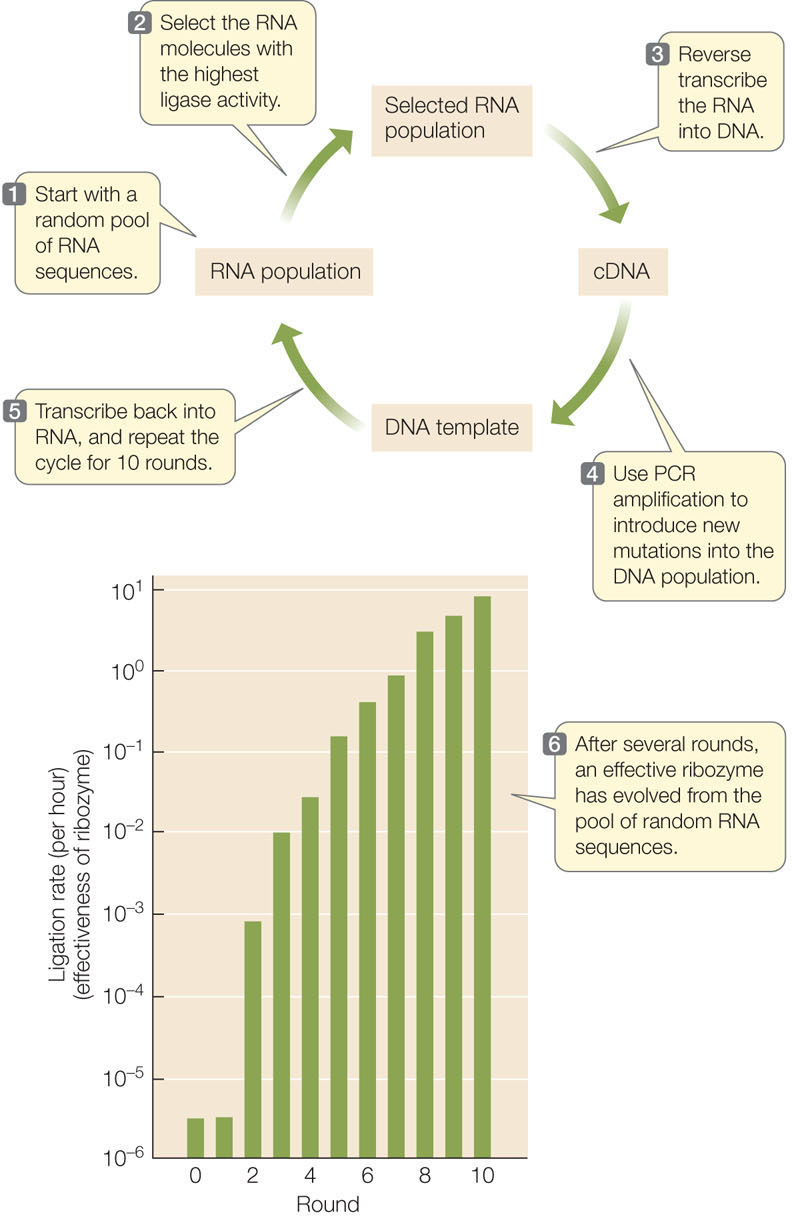Concept 15.7: Evolutionary Theory Has Practical Applications
Evolutionary theory has many practical applications across biology, and new ones are being developed every day. Here we’ll discuss a few of these applications to fields such as agriculture, industry, and medicine.
Knowledge of gene evolution is used to study protein function
Earlier in this chapter we discussed some of the ways biologists can detect codons or genes that are under positive selection for change. These methods have greatly increased our understanding of the functions of many genes. Consider, for example, the gated sodium channel genes. Sodium channels have many functions, including the control of nerve impulses in the nervous system (see Concept 34.2). Sodium channels can become blocked when they bind certain toxins, one of which is the tetrodotoxin (TTX) present in puffer fishes and many other animals. A human who eats puffer fish tissues that contain TTX can become paralyzed and die because the toxin-blocked sodium channels prevent nerves and muscles from functioning properly.
But puffer fish themselves have sodium channels, so why doesn’t the TTX in their system paralyze them? Nucleotide substitutions in the puffer fish genome have resulted in structural changes in the proteins that form the sodium channels, and those changes prevent TTX from binding to the channel pore. Several different substitutions that result in such resistance have evolved in the various duplicated sodium channel genes of the many species of puffer fish. Many other changes that have nothing to do with the evolution of tetrodotoxin resistance have occurred in these genes as well.
So how does what we have learned about the evolution of TTX-resistant sodium channels affect our lives? Mutations in human sodium channel genes are responsible for a number of neurological pathologies. By studying the function of sodium channels and understanding which changes have produced tetrodotoxin resistance, we are learning a great deal about how these crucial channels work and how various mutations affect them. Biologists do this by comparing rates of synonymous and nonsynonymous substitutions across sodium channel genes in various animals that have evolved TTX resistance. In a similar manner, molecular evolutionary principles are used to understand function and diversification of function in many other proteins.
In vitro evolution produces new molecules
Living organisms produce thousands of compounds that humans have found useful. The search for naturally occurring compounds that can be used for pharmaceutical, agricultural, or industrial purposes has been termed “bioprospecting.” These compounds are the result of millions of years of molecular evolution across millions of species of living organisms. Yet biologists can imagine molecules that could have evolved but have not, in the absence of the right combination of selection pressures and opportunities.
For instance, we might want to find a molecule that binds a particular environmental contaminant so that the contaminant can be isolated and extracted from the environment. But if the contaminant is synthetic (not produced naturally), then it is unlikely that any living organism would have evolved a molecule with the function we desire. This problem was the inspiration for the field of in vitro evolution, in which new molecules are produced in the laboratory to perform novel and useful functions.
The principles of in vitro evolution are based on principles of molecular evolution that we have learned from the natural world. Consider a new RNA molecule that was produced in the laboratory using the principles of mutation and selection. The new molecule’s intended function was to join two other RNA molecules (acting as a ribozyme with a function similar to that of the naturally occurring DNA ligase described in Concept 9.2, but for RNA molecules). The process started with a large pool of random RNA sequences (1015 different sequences, each about 300 nucleotides long), which were then selected for displaying any ligase activity (FIGURE 15.24). None were very effective ligases, but some were slightly better than others. The most functional of the ribozymes were selected and reverse-transcribed into cDNA (using the enzyme reverse transcriptase). The cDNA molecules were then amplified using the polymerase chain reaction (PCR; see Figure 9.15). PCR amplification is not perfect, and it introduced many new mutations into the pool of RNA sequences. These sequences were then transcribed back into RNA molecules using RNA polymerase, and the process was repeated.

The ligase activity of the RNAs evolved quickly; after ten rounds of in vitro evolution, it had increased by about 7 million times. Similar techniques have been used to create a wide variety of molecules with novel enzymatic and binding functions.
Evolutionary theory provides multiple benefits to agriculture
Well before humans had a clear understanding of evolution, they were selecting beneficial traits in the plants and animals they used for food. Modern agricultural practices have benefitted from a clearer understanding of evolutionary principles. Agriculturists have also used knowledge of evolutionary relationships and principles to incorporate beneficial genes into our food crops from many wild species.
Evolutionary theory has also proved important for understanding how to reduce the threats of pesticide and herbicide resistance. When farmers use the same pesticide over many seasons, the pests they are trying to kill gradually evolve resistance to the pesticide. Each year, a few pest individuals are slightly better at surviving in the presence of the pesticide, and those individuals produce most of the next generation of crop pests. Because their genes allow them to survive at a higher rate, and because they pass these resistant genes on to their offspring, pesticide resistance quickly evolves in the entire population. To combat this problem, evolutionary biologists have devised pesticide application and rotation schemes to reduce the rate of evolution of pesticide resistance, thus allowing farmers to use pesticides more effectively for longer periods of time.
322
Knowledge of molecular evolution is used to combat diseases
Many of the most problematic human diseases are caused by living, evolving organisms that present a moving target for modern medicine, as we described for influenza at the start of this chapter. The control of these and many other human diseases depends on techniques that can track the evolution of pathogenic organisms over time.
During the past century, transportation advances have allowed humans to move around the world with unprecedented speed and increasing frequency. Unfortunately, this mobility has increased the rate at which pathogens are transmitted among human populations, leading to the global emergence of many “new” diseases. Most of these emerging diseases are caused by viruses, and virtually all new viral diseases have been identified by evolutionary comparison of their genomes with those of known viruses. In recent years, rodent-borne hantaviruses have been identified as the source of widespread respiratory illnesses, and the virus that causes sudden acute respiratory syndrome (SARS) has been identified, as has its host, using evolutionary comparisons of genes. Studies of the origins, timing of emergence, and global diversity of many human pathogens (including HIV, the human immunodeficiency virus) depend on evolutionary principles and methods, as do efforts to develop effective vaccines against these pathogens.
At present, it is difficult to identify many common infections (the viral strains that cause “colds,” for instance). As genomic databases increase, however, automated methods of sequencing and making evolutionary comparisons of sequences will allow us to identify and treat a much wider array of human (and other) diseases. Once biologists have collected genome data for enough infectious organisms, it will be possible to identify an infection by sequencing a portion of the pathogen’s genome and comparing this sequence with other sequences on an evolutionary tree.
CHECKpoint CONCEPT 15.7
- How can gene evolution be used to study protein function?
- How are principles of evolutionary biology used to identify emerging diseases?
- What are the key elements of in vitro evolution, and how do these elements correspond to natural evolutionary processes?
The processes of evolution have produced a remarkable variety of organisms, some of which are adapted to most environments on Earth. In the next chapter we will describe how biologists study the evolutionary relationships across the great diversity of life.
Question 15.2
How do biologists use evolutionary theory to develop better flu vaccines?
ANSWER Many different strains of influenza virus circulate among human populations and other vertebrate hosts each year, but only a few of those strains survive to leave descendants. Selection among these circulating influenza strains results in rapid evolution of the viral genome. One of the ways that influenza strains differ is in the configuration of proteins on their surface. These surface proteins are the targets of recognition by the host immune system (FIGURE 15.25).

323
When changes occur in the surface proteins of an influenza virus, the host immune system may no longer detect the invading virus, so the virus is more likely to replicate successfully. The viral strains with the greatest number of changes to their surface proteins are most likely to escape detection by the host immune system, and are therefore most likely to spread among the host population and result in future flu epidemics. In other words, there is positive selection for change in the surface proteins of influenza.
By comparing the survival and proliferation rates of virus strains that have different gene sequences coding for their surface proteins, biologists can study adaptation of the viruses over time (Concept 15.2). If biologists can predict which of the currently circulating flu virus strains are most likely to escape host immune detection, then they can identify the strains that are most likely to be involved in upcoming influenza epidemics and can target those strains for vaccine production.
How can biologists make such predictions? By examining the ratio of synonymous to nonsynonymous substitutions in genes that encode viral surface proteins, biologists can detect which codon changes (i.e., mutations) are under positive selection (Concept 15.5). They can then assess which of the currently circulating flu strains show the greatest number of changes in these positively selected codons. It is these flu strains that are most likely to survive and lead to the flu epidemics of the future, so they are the best targets for new vaccines. This practical application of evolutionary theory leads to more effective flu vaccines—and thus fewer illnesses and influenza-related deaths each year.